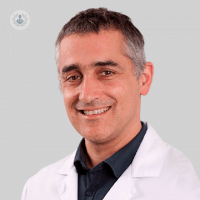Salivary Gland Surgery
The major salivary glands, which generate and empty saliva into the mouth, are three pairs: the submandibular gland, sublingual salivary glands and the parotid glands. Surgery of the parotid gland, also known as parotidectomy, is the operation that handles remove tumors that grow in the gland. It is estimated that over 70% of these tumors are benign (noncancerous) but we must consider any package that is detected. Depending on the type of tumor it is, its size and location, different variants of this intervention practiced. The most common are superficial parotidectomy or total parotidectomy, with conservation of the facial nerve, which also involves a lymph node dissection. The salivary glands may also have other diseases, the most common are: sialolithiasis, which is blockage of the salivary glands by the presence of calcium stones that do not allow the output of saliva and cause inflammation of the gland salivary affected; and sialadenitis, that is infection of the salivary glands, which can be an effect of sialolithiasis, or be caused by a virus or bacteria







